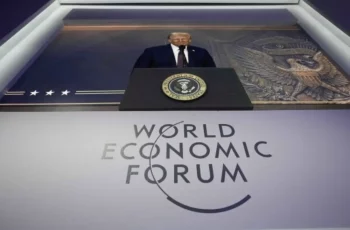
Since Russia’s February 2022 invasion of Ukraine, a popular Western narrative warns that President Vladimir Putin harbors ambitions to attack NATO countries and even conquer Europe. European officials have sounded the alarm: for example, Germany’s defense minister Boris Pistorius cautioned that Putin “might even attack a NATO country one day,”suggesting that within 5–8 years such aggression could be possible.
This view portrays Putin as an imperialist with a master plan—seeking to subjugate Ukraine and then rebuild a Russian empire in Eastern Europe, much as the Soviet Union did after World War II.
In short, the conventional wisdom holds that “Putin is ultimately a threat to the West and must be dealt with forcefully,”casting him as a rogue aggressor bent on European conquest.
Yet there is an alternative interpretation, espoused by a minority of experts and often reflected in Russian analyses, which challenges this alarmist narrative.
From this perspective, Russia’s war in Ukraine is fundamentally a defensive response to years of NATO’s eastward expansion and Western encroachment on Moscow’s security red lines, rather than the first step in a grand campaign to invade Europe.
Indeed, it appears inconsistent that Western discourse labels Russia’s army a “failed” or incompetent force, even a “so-called superpower” in decline, while simultaneously claiming it poses an existential military threat to the entire European continent. By examining these competing narratives, it can be said that NATO’s expansion helped spark the conflict, that Western fears of a Russian invasion of Europe rest on shaky assumptions and internal contradictions, and that such fears could become a dangerous self-fulfilling prophecy.
Despite assurances at the Cold War’s end that NATO would not move “one inch eastward” toward Russia’s borders, the alliance has continually expanded over the past three decades.
In 1999, Poland, Hungary, and the Czech Republic joined NATO, followed by a major expansion in 2004 that brought seven more Eastern European countries into the alliance, including the Baltic states directly bordering Russia.
From Moscow’s perspective, this creeping enlargement represented a steadily tightening noose around Russia’s strategic perimeter. By the late 2000s, NATO had not only incorporated former Warsaw Pact states but was openly discussing eventual membership for Georgia and Ukraine – crossing what Russia had long signaled would be a red line for its security.
In President Putin’s famous 2007 speech at the Munich Security Conference, he blasted NATO expansion as hostile to Russia, warning that the West’s “open door” policy was creating new dividing lines in Europe and would have dire consequences for peace. But his words fell largely on deaf ears in Western capitals.
American diplomats and analysts had in fact warned years earlier that expanding NATO toward Russia’s borders could provoke exactly the kind of conflict we see today. George F. Kennan, the renowned architect of Cold War containment, cautioned in 1998 that NATO enlargement was a “tragic mistake”: he predicted Russia would react adversely and that the policy was unnecessary since “no one was threatening anyone else” at the time.
Similarly, a 2008 U.S. Embassy cable authored by William Burns (then U.S. Ambassador to Moscow, and later CIA Director) starkly warned Washington that Ukrainian entry into NATO would be seen as an intolerable threat in Moscow. Burns wrote that for Russia’s leaders, NATO expansion to Ukraine is “neuralgic” and could “split the country in two, leading to violence or even, some claim, civil war, which would force Russia to decide whether to intervene.”
He reported that Russia would “have to take appropriate measures” if Ukraine joined NATO.
These prescient warnings – coming from seasoned American officials – went unheeded. In 2008, NATO’s Bucharest summit formally promised Ukraine and Georgia eventual membership (though without a timeline), further convincing Russia that the West was ignoring its security red lines.
When a pro-Western revolt in Kyiv (the 2014 Maidan uprising) ousted Ukraine’s neutral-leaning government, Russia viewed the situation as an acute threat – fearing Ukraine would fast-track into NATO and host U.S. military bases on its soil.
Moscow’s subsequent annexation of Crimea and support for separatists in Donbas were, in Putin’s eyes, defensive and reactive measures. By the time Russia launched its full-scale invasion in February 2022, Putin framed it as a “preventive war”: an attempt to forestall further NATO expansion and eliminate the perceived Western military foothold in Ukraine.
As prominent international relations scholar John Mearsheimer argues, “the principal cause of the conflict is the NATO decision to bring Ukraine into the alliance,” which virtually all Russian leaders saw as an existential threat.
In this view, Russia’s special military operation was not motivated by a desire to occupy Europe, but by the urgent imperative to secure its own strategic backyard.
Analysis of different opinions suggests that the war in Ukraine is better understood as the tragic culmination of a security dilemma – with NATO’s advance triggering a defensive Russian reaction – rather than as the first stage of a Kremlin plot to conquer the EU.
to be continued










Comments